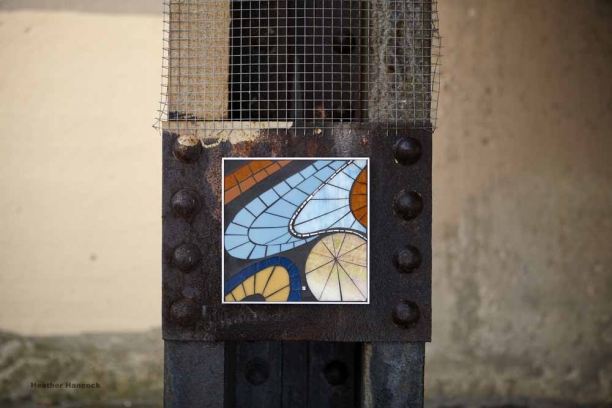The color I'm craving right now is fuchsia. This specific color need hits at the beginning of winter every year and I begin to search for fuchsia in any form. I study the withered vines on my fence that have turned bright pink. I buy pomegranates in bulk without actually eating them. I find the fuchsia element in street art. Sometimes I have to paint things fuchsia. What I really want is fuchsia glass. There are plenty of plums, violets, mauves and lilacs but blue-toned pinks are rare. Bullseye creates some eye-popping pinks and purples but according to the catalog many of them are considered "strikers" which require firing to achieve their full color. I generally ignore all glass samples marked "pre-fired" but this time as I pored over the sample box, I realized that these are exactly the gorgeous pinks (and corals) I'm craving. So I picked up the phone and met the very helpful Sarah Givens of Bullseye glass. Sarah explained that true (blue) pink is challenging to manufacture owing to its volatile gold-based chemical composition. Many of the purples and pinks are more sensitive to heat so Bullseye avoids applying too much during production of these colors. Given that the majority of their glass is used by kiln-form artists, "strikers" can tolerate additional kiln-work, giving the artist longer working time with the glass and more control over the final color.
But where does that leave the cold/cut glass artist?! Sarah suggested tracking down a local kiln-form artist who might be able to fire the glass for me. So I contacted my friend Paul Messink of Turtle Bay Glass. I met Paul a number of years ago at an art festival in Chicago. I was starting to exhibit my work and he was finding his way in the kiln-formed glass world. We've kept in touch. Apparently there's room in his kiln schedule right now so there are 8 sheets of intense fuchsia and vivid coral en route to his studio. He'll fire it and I'll go for a studio visit early in the New Year to see what I can learn about his process and current work. Looking forward to catching up with Paul and to having these lush glass colors.








